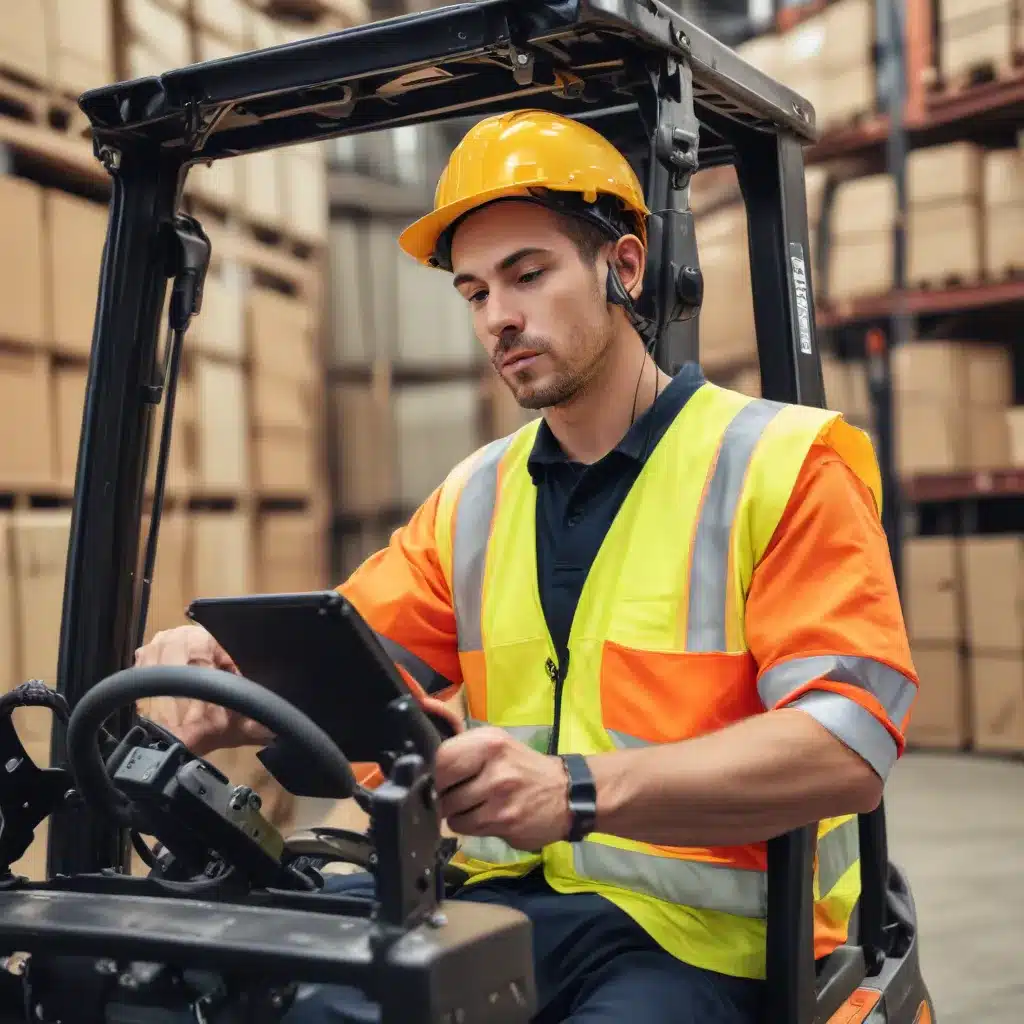
The Evolving Landscape of Forklift Safety
The warehousing and logistics industries have undergone a remarkable transformation in recent years, driven by the surge in e-commerce and the growing complexity of supply chain operations. Forklifts, the unsung heroes of these fast-paced environments, have become increasingly integral to the efficient movement and management of materials. However, with the rise in forklift usage comes the inherent risks of collisions, accidents, and workplace injuries – challenges that the industry is actively seeking to address through innovative safety solutions.
The integration of cutting-edge wearable technologies has emerged as a game-changer in forklift safety, offering a multifaceted approach to enhancing operator awareness, improving productivity, and safeguarding the wellbeing of the entire workforce. By harnessing the power of smart sensors, advanced analytics, and seamless connectivity, forklift operators and their surrounding environments are now part of a connected ecosystem that prioritizes safety through technological innovation.
Smart Sensors and Automated Warning Systems
One of the groundbreaking innovations in forklift safety is the implementation of smart sensors. These sensors, designed to detect obstacles, pedestrians, and other forklifts in the vicinity, utilize a combination of ultrasonic, infrared, and radar technologies to provide real-time data to the forklift operator. This proactive approach significantly reduces the risk of collisions and improves overall workplace safety.
The smart sensors integrate advanced algorithms to interpret the data from their surroundings, triggering alerts when an obstacle is detected within a predefined range. These alerts can take the form of visual indicators or audible alarms, immediately drawing the operator’s attention to potential hazards. Some more sophisticated systems even initiate automatic braking or speed reduction to prevent accidents, effectively mitigating the risks associated with human error.
Complementing the smart sensors are automated warning systems, which work hand-in-hand to enhance visibility and awareness for forklift operators. These systems often include features such as 360-degree cameras, proximity alarms, and blind-spot detection capabilities. By providing a comprehensive view of the surroundings and alerting operators to blind spots, these technologies assist in making informed decisions, reducing the likelihood of collisions and enhancing overall safety.
Immersive Operator Training Simulations
Operator training is a fundamental aspect of forklift safety, and the industry has embraced the power of virtual reality (VR) technology to create advanced training simulators. These simulators offer realistic, immersive scenarios that allow trainees to navigate a virtual warehouse, handle loads, and respond to various challenges in a controlled environment.
The hands-on experience gained through VR simulations enhances operator skills, reaction times, and decision-making abilities, ensuring safer and more proficient forklift operations. These advanced training simulators typically feature realistic scenarios, hands-on training, and comprehensive performance analytics, allowing trainers to assess and address specific areas for improvement.
By leveraging VR technology, forklift operators can develop and refine their skills without the risks associated with real-world operations, making the training process more effective and engaging. This approach not only improves safety but also promotes a culture of continuous learning and professional development within the industry.
The Future of Forklift Safety: AI, Connectivity, and Augmented Reality
As the forklift safety landscape continues to evolve, several emerging trends are poised to shape the industry’s future. The integration of artificial intelligence (AI) is anticipated to enhance forklift safety even further. AI algorithms can analyze vast amounts of data from sensors and cameras in real-time, enabling predictive analytics for potential safety hazards and providing valuable insights into areas for improvement.
AI-driven systems can learn from past incidents, continuously improving their ability to prevent accidents and adapting to individual cases and setups. This technology-driven approach allows for proactive safety management, reducing the risks associated with mechanical failures and enhancing the overall safety of the workplace.
The connectivity of forklift systems is another trend that is expected to gain prominence. Forklifts equipped with specialized sensors can communicate vital data, such as maintenance requirements, usage patterns, and safety metrics, to a centralized system. This data connectivity enables proactive management and maintenance, further reducing the risks associated with mechanical issues and improving the overall efficiency of forklift operations.
Additionally, the integration of augmented reality (AR) systems is predicted to become more prevalent, enhancing operator guidance and situational awareness. Forklift operators can receive visual cues, such as navigation paths, load weight indicators, and safety alerts, directly through AR displays in their field of view. This technology helps promote precise and safe operation by providing operators with real-time information without distractions.
Embracing the Future of Forklift Safety
The forklift industry’s commitment to creating safer workplace environments is undeniable, and the integration of innovative wearable technologies is a testament to this dedication. From smart sensors and automated warning systems to advanced operator training simulators, the current landscape reflects a holistic approach to mitigating the risks associated with forklift operations.
As the industry continues to evolve, the integration of artificial intelligence, communication and connectivity, and augmented reality will further enhance safety standards, ensuring that forklifts remain indispensable tools in a secure and efficient workplace. By embracing these advancements, warehouse managers and handling staff can look forward to an overall safer working environment, where the wellbeing of employees is prioritized, and productivity is enhanced through the seamless integration of cutting-edge technology.
To stay informed about the latest developments in forklift safety and explore how Forklift Reviews can help you navigate the industry’s rapidly evolving landscape, be sure to visit our website and subscribe to our newsletter.

